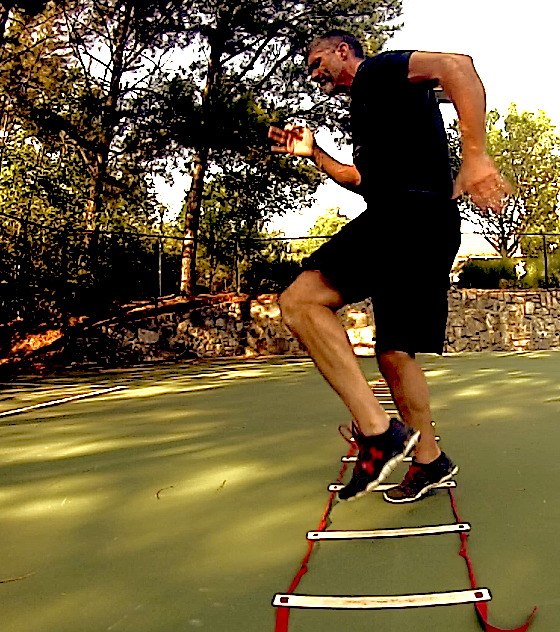
3 Kettlebell Movements For Optimal Mobility
Being in the fitness business now for over 15 years I can tell you that it’s one tough industry. There is no doubt that to succeed in this industry an individual must grind and be willing to accept the fact that they are going to have to do a lot of things that are uncomfortable in order to succeed. This is so true in this industry and it certainly makes for a greater metaphor for running a business in this particular industry. With that being said today I’m going to talk about three different kettlebell movements that may cause a little discomfort, but yield you some great results.
Kettlebell Movements: The Frontal And Transverse Plane
When it comes to planning a solid strength and conditioning program I’ve always been a big proponent of getting a trainee proficient in moving in all three planes of motion. The sagittal, frontal, and transverse planes of motion are the spectrum in which our bodies are allowed to move in this world. Because of this I want to be sure to cover all three when it comes to specific programming.

When looking at these I tend to find that a good portion of people tend to lack more consistent movement in the frontal, or transverse plane of motion when it comes to performance. For the sake of today’s post I want to address three different kettlebell movements that will help us attack both of these problem areas.
Kettlebell Movements: Kettlebell Halos
As seen in the video above the kettlebell halo is a great way to prime the thoracic spine by mobilizing that part of the body while having to simultaneously stabilize the kettlebell. To perform this you want to hold the kettlebell in the upside down position while grabbing the horns (sides of the handles) to perform the movement.
Carefully circle the kettlebell around your head with the same side of the bell facing your head in a full rotation. Practice circling the same amount of designated repetitions in both the clockwise and counter-clockwise direction for symmetry. Start out with a lighter weight and progress from there.
Kettlebell Movements: Reverse Lunge To Halo
Obviously there are some similarities here between the first exercise and this one. Now that we have gotten the hang of executing the kettlebell halo we can include the reverse lunge for a greater challenge in the attempt to develop more strength and stability. This essentially involves us building off of what we already know.

Perform this by starting with your feet about hip width apart. Start the reverse lunge and simultaneously (in the descent of the lunge) circle the kettlebell in the direction of the grounded front leg. In other words, if you reverse lunge leading back with the left leg then circle the kettlebell in the direction over the right leg and right shoulder (counter-clockwise direction).
Likewise if you reverse lunge leading back with the right leg circle the kettlebell over the left leg and shoulder in the clockwise direction. Work to make both movements seamless and focus on control and stability because the movement will certainly challenge your footing.
Kettlebell Movements: Kettlebell Rotational High Swing/Atlas Swing
This particular drill resembles a golf swing, but I promise you there’s a lot more power involved in swinging this apparatus. The rotational high swing, or Atlas swing is tremendous for building rotational strength and stability with the kettlebell.
Start out performing this drill with a lighter bell until you get the hang of the movement. Grip the handle of the bell with both hands. In this demonstration I gripped the handle with what you would consider a right handed grip to swing across to my left to start. This is just my preference.

It doesn’t matter in terms of symmetry because as the swing transitions to the other side the body is getting rotation in both directions. When performing this particular swing you want to keep a few things in mind.
First, make sure that you are mindful of the path and arc of your kettlebell swing as you don’t want to hit yourself coming across your body.
Secondly, you want to swing maintaining a solid grip and making sure the arc of the swing movement is powerful and smooth so that there is no wobbling in the kettlebell at the peak ascent to throw you off balance.
Thirdly, make sure to rotate your body and pivot your feet (particularly your back foot) on the swing as you would if you were swinging a golf club, or baseball bat. This allows for the execution of the movement to be ideal and is vital in preventing an injury due to the torquing action of the movement.
In Closing
The key to smart programming is making sure to apply movement to all three planes of motion. With a more well rounded function in the three planes of motion we stand to acquire a higher level of fitness and athletic ability. In short we’ll just be able to move better.
Are you emphasizing movements in your training to get more proficient in the frontal and transverse plane of motion? Post up in the comments below. Stay strong.
Related Articles:
3 Great Exercises To Prime Your Hips, Knees, And Ankles
3 Unconventional And Simple Strength Moves
Emphasize Your Athletic Fitness
Triple Extension: Making Strength Gains With Hip, Knee, & Ankle Extension
Everything You Need To Know About Speed Training
Get Free Updates And Training Guides Here





